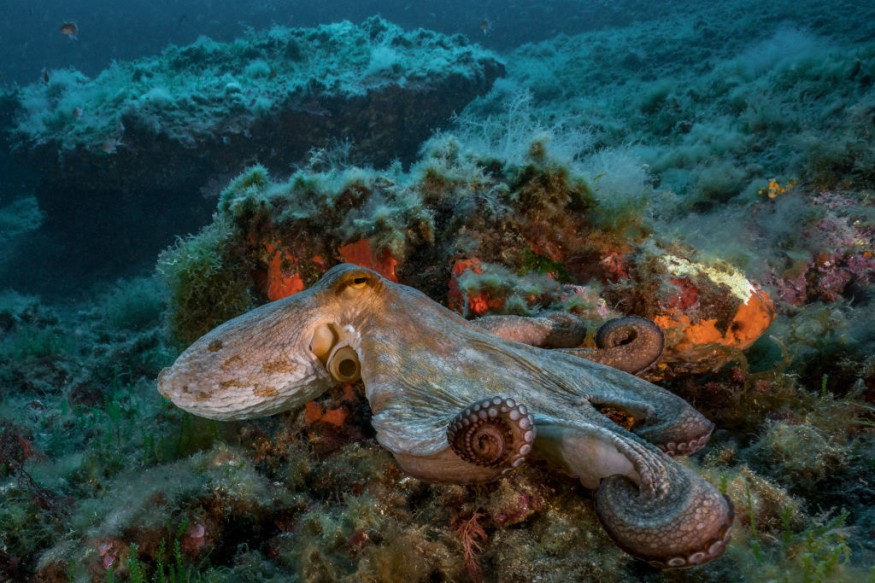Invasive species have become a worldwide issue. The number of non-native species in European seas has climbed to about 1,300 in the previous 20 years. The problem is most serious in the Mediterranean Sea, which is home to 69 percent of them, although only 10% are considered invasive.

Mediterranean Invasion

Species like the Atlantic blue crab in Catalonia and the lionfish in Cyprus can endanger native marine life.
When a species spreads in vast numbers, it causes substantial ecological difficulties, such as out-competing native species, or it causes problems for people in terms of employment and livelihoods.
How They Reached There
These animals are introduced into new areas in various ways, but the primary reason is human activity.
The primary global culprits, according to researchers, are commerce and commercial boats.
Small creatures can be transported to other seas by attaching themselves to ships or being carried within their ballast water, which is used to balance the ship when it is not loaded with cargo. All the small creatures that were pulled in with the water at the beginning are released into the new environment when the boats release this water to load their cargo.
Aquaculture and imports are the second most important factors in species invasion. Researchers assume that roughly 46% of non-native species in Northern European oceans entered via oyster culture imports via propagules (what an organism makes to replicate itself) in the shells.
"Because the oyster shells are so complicated, you have all kinds of different species' propagules, including tunicates and seaweeds." As a result, they've begun to expand and infect nations like France, Spain, and the United Kingdom," said Jason Hall-Spencer, a marine biology professor in Plymouth.
Invasive Breeding Place
What has caused the Mediterranean to become such a breeding ground for non-native species?
Hundreds of invasive species have entered the Mediterranean through the Suez Canal, said Hall-Spencer, who has previously worked in Cyprus to prevent the lionfish invasion.
Man-Mande Canal
The man-made canal connects the Mediterranean Sea to Egypt's Red Sea. It is a vital commerce route between Europe and Asia since it cuts the distance traveled by ship by 9,000 kilometers.
The second most crucial component in species invasion is aquaculture and imports. Researchers estimate that oyster culture imports introduced over 46% of non-native species in Northern European seas via propagules (organisms that make themselves multiply) in the shells.
Because oyster shells are so complicated, you get all kinds of different species' propagules, including tunicates and seaweeds, said Jason Hall-Spencer, a marine biology professor in Plymouth. As a result, they've begun to spread and infect nations like France, Spain, and the United Kingdom.
Climate change is causing the Eastern Mediterranean to warm faster than the rest of the world. As a result, many Red Sea species thrive in the conditions found in the Eastern Mediterranean Sea, such as near Cyprus or Lebanon. As a result, we're seeing them infiltrate and thrive, Hall-Spencer explained.
It's a combination effect, then. The canal is the primary cause of the problem, but the temperature of the water is approaching that of the Red Sea, he noted.
Non-native species thrive in the Mediterranean for various causes, including climate change and commerce. Overfishing is also a major problem, as it eliminates their natural predators.
There's an extreme biodiversity problem [in the Mediterranean Sea] because people are hunting and killing all of the large fish. And it tipped the system in favor of microscopic creatures, Hall-Spencer explained.
Are All Invasive Species Dangerous?

Invasive species are not all dangerous, although some are ravenous predators.
Some species, such as the Pacific oyster, are relatively unharmful to the environment. On the other hand, others can have catastrophic consequences, not just for biodiversity but also for the local economy.
"Fish are a particular concern in the Mediterranean because they devour other fish and invertebrates," Hall-Spencer explained.
For example, the Red Sea pufferfish is exceedingly dangerous to humans and cannot be eaten. They are vicious predators who have been known to break fishing nets to get access to the prey within.
If they are captured in a net with other fish, they will attack and poison them, causing the entire catch to be spoiled.
Fierce Predator
The lionfish is a powerful predator, but it has one advantage over the pufferfish in terms of economics: it makes a nice meal.
Hall-Spencer worked on RELIONMED, a European Union-funded initiative to identify measures to lower Cyprus' population size.
The organization organized teams of divers to hunt the fish as part of the operation.
Related Article : Top 5 Most Destructive Invasive Species Today
For the most recent updates from the animal kingdom, don't forget to follow Nature World News!
© 2025 NatureWorldNews.com All rights reserved. Do not reproduce without permission.





